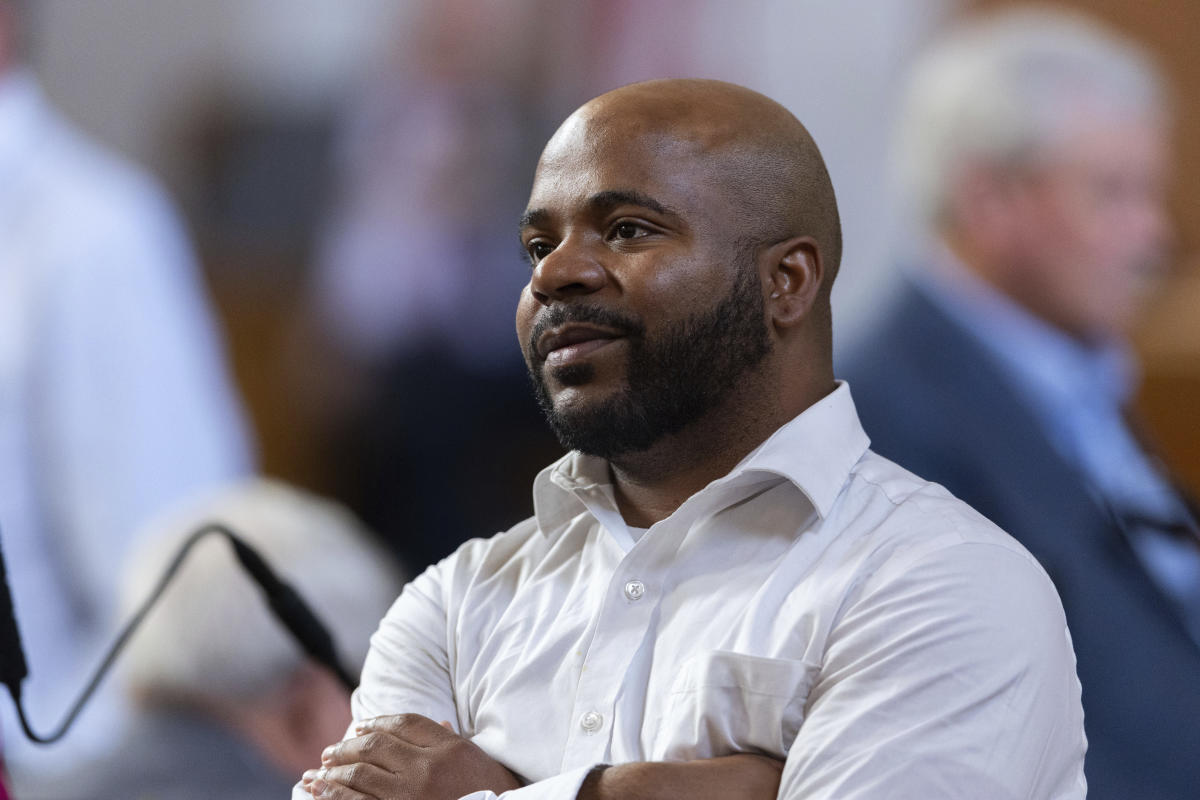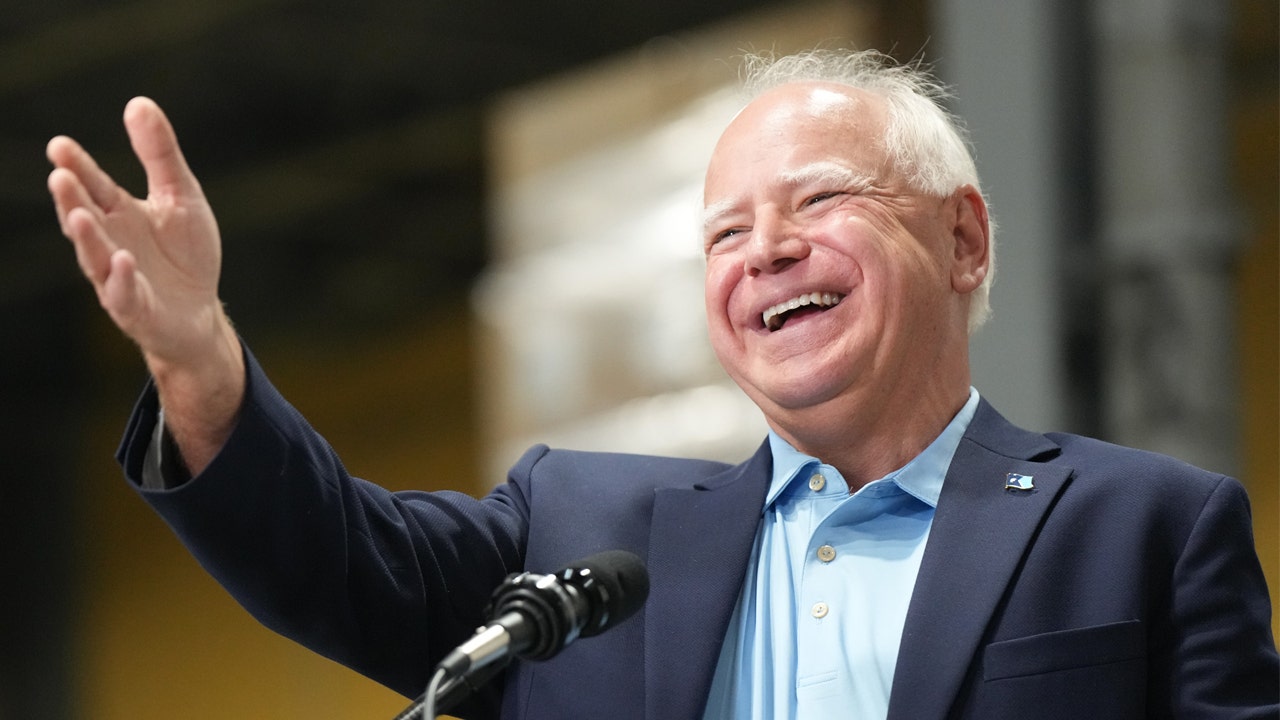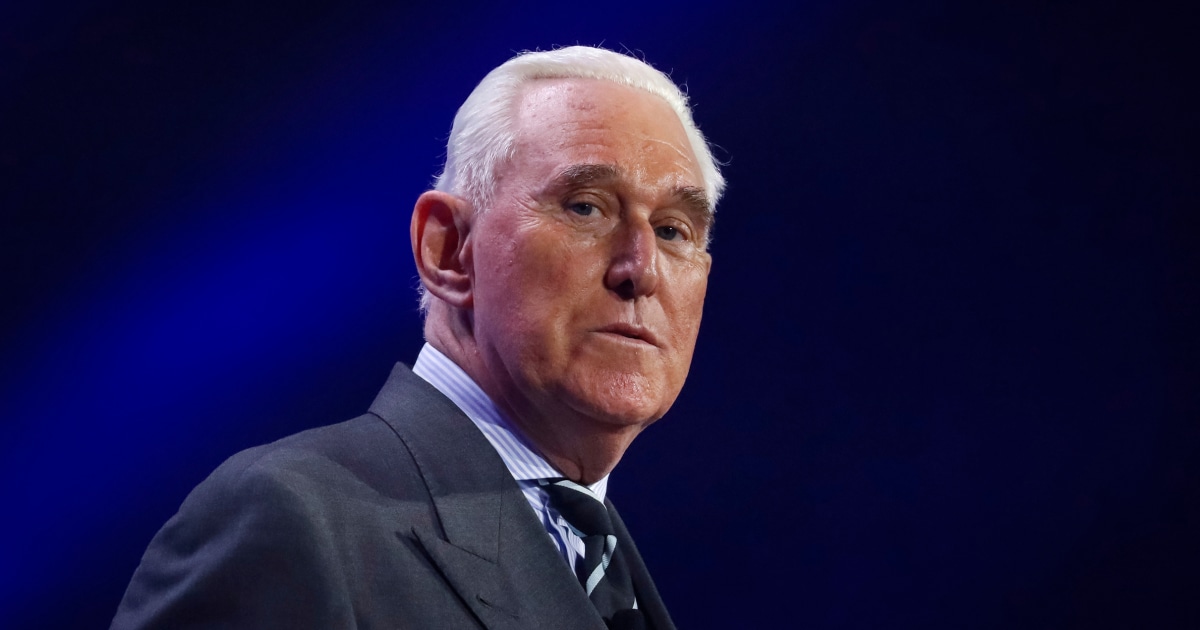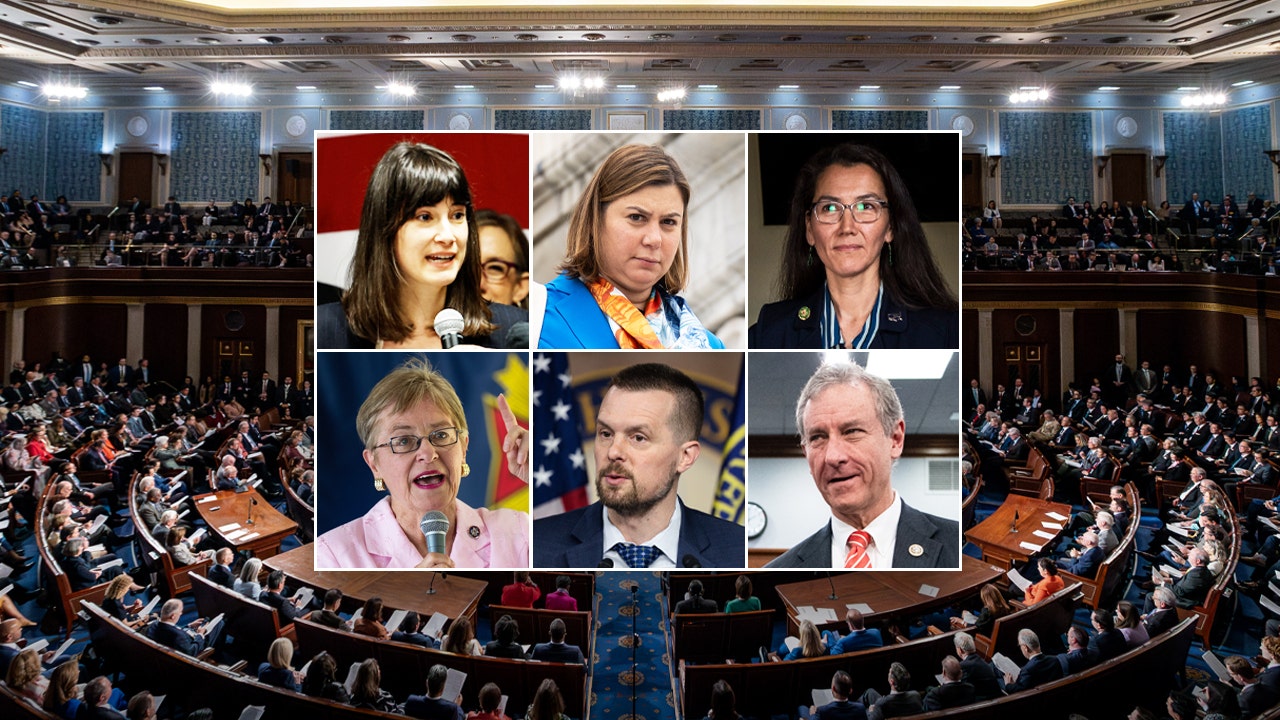Lifestyle
WNBA star Dearica Hamby sues the league and her former team for discrimination

Dearica Hamby speaks during a Team USA 3×3 Basketball press conference in Paris in July. The U.S. women’s 3×3 basketball team won bronze at the Olympics last week.
Mike Lawrie/Getty Images
hide caption
toggle caption
Mike Lawrie/Getty Images
Fresh off an Olympic bronze medal, basketball star Dearica Hamby has filed a federal lawsuit against the WNBA and her former team, the Las Vegas Aces.
The three-time WNBA All-Star and two-time Sixth Women of the Year winner is accusing the league and her former team of discriminating and retaliating against her while she was pregnant, culminating in her trade to the Los Angeles Sparks in January 2023.
“Defendant’s decision to trade [Hamby] was motivated by [Hamby’s] announcement that she was pregnant after signing her contract extension,” reads the 18-page complaint, filed in U.S. district court in Nevada on Monday.
Hamby’s lawyers allege that being traded caused Hamby harm, including “lost promotional and/or endorsement opportunities, relocation to a more unfavorable tax environment, and the denial of a chance to participate for a back-to-back WNBA championship.”
They are asking for compensatory and punitive damages, “to be determined at trial.”

The Aces did not respond to a request for comment. Nor did the WNBA, but a spokesperson for the league has told multiple media outlets that officials are “reviewing the complaint.”
Aces coach Becky Hammon has denied Hamby’s allegations in the past, saying in May 2023 that the trade “came down to math and business.”
“We made the decision to move Hamby because we could get three bodies in for her one contract,” Hammon told reporters. “[Her pregnancy] was never an issue, and it was never the reason she was traded. It just wasn’t.”
The WNBA launched a formal investigation into Hamby’s discrimination claims in early 2023 — around the time that her second child was born — and concluded that the Aces had violated league rules “regarding impermissible player benefits.”
It consequently rescinded the Aces’ 2025 first-round draft pick, and also suspended Hammon for two games without pay “for violating league and team Respect in the Workplace policies.”
But this month’s lawsuit argues that the WNBA’s response didn’t go far enough to correct the violation of Hamby’s rights or provide her with any meaningful redress. Her lawyers say the WNBA “had the power to, but did not, rescind the trade.”
“The [WNBA] did not impose adequate punishment or consequences on the [Las Vegas Aces] for the discriminatory treatment experienced by [Hamby] nor for her unlawful trade to the Los Angeles Sparks such that it would deter any future similar conduct,” the complaint says.

Hamby gave birth to her son, Legend, in March 2023 and reported to training camp for the Sparks the following month. The lawsuit says she did not miss any required time with the team as a result of her pregnancy, and went on to play in all 40 of their regular season games. At the end of the season, the Aces won their second consecutive championship, without her.
Hamby filed a discrimination claim against the WNBA and the Aces with the Equal Employment Opportunity Commission in the fall of 2023, and the federal agency ruled in May 2024 that she had the right to sue.
Hamby’s attorneys — with the national firm HKM Employment Attorneys — said in a statement that the Aces had “exiled” Hamby for becoming pregnant and “the WNBA responded with a light tap on the wrist.”
“Every potential mother in the league is now on notice that childbirth could change their career prospects overnight,” they added. “That can’t be right in one of the most prosperous and dynamic women’s professional sports leagues in America.”
‘You’re trading me because I’m pregnant?’
Hamby has played in the WNBA since 2015, starting with the San Antonio Stars — who began operating as the Las Vegas Aces in 2018. She helped lead the Aces to their first-ever WNBA championship in the fall of 2022.
According to the lawsuit, Hamby signed a two-year contract extension with the team in the spring of 2022, which would have carried her through the 2024 playing season.
To seal the deal, the lawsuit says, the team offered Hamby additional “benefits and inducements” like an agreement to cover private school tuition costs for her daughter and allow her to occupy team-provided housing.

Less than a month after Hamby signed the contract extension, she discovered she was pregnant again. She told Hammon and other Aces staff during the summer, and publicly announced her pregnancy at their championship victory parade that fall.

Dearica Hamby poses with her daughter Amaya during a 2022 WNBA championship ring ceremony before the Aces’ game against the Los Angeles Sparks in May 2023.
Steve Marcus/Getty Images
hide caption
toggle caption
Steve Marcus/Getty Images
Hamby’s lawyers say that once her pregnancy was public, she “experienced notable changes in the way she was treated by Las Vegas Aces staff.”
She couldn’t get a clear answer on when her daughter’s tuition would be paid, and was informed that she had to vacate team-provided housing, according to the suit.
The lawsuit also recounts a January 2023 phone call between Hammon and Hamby in which the coach allegedly questioned her commitment to the team, falsely accused her of signing her contract extension while pregnant and suggested she wasn’t taking her off-season workouts seriously. The lawsuit says Hamby, then seven months pregnant, was “working out regularly as permitted by her medical doctors.”

Hammon allegedly told Hamby that no one expected her to get pregnant again, “implying that by signing the contract extension, Hamby implicitly agreed she would not get pregnant during the two-year extension period.”
Hamby’s lawyers say she twice asked, “You’re trading me because I’m pregnant?” Hammon allegedly responded, “What do you want me to do?”
According to the lawsuit, Hammon told Hamby the next day that her “time with the Aces is up,” and that she could “pick a place like Los Angeles or Atlanta.” Within a week, the team publicly announced that Hamby had been traded to the Los Angeles Sparks.
Hamby says she was punished after she spoke out
Hamby responded to the trade announcement with a public social media post expressing her gratitude and excitement, but also admitting that she was “heartbroken.”
“Being traded is a part of the business. Being lied to, bullied, manipulated and discriminated against is not,” she wrote, before outlining some of the back and forth over her pregnancy. “The unprofessional and unethical way that I have been treated has been traumatizing. To be treated this way by an organization, BY WOMEN who are mothers, who have claimed to ‘be in these shoes,’ who preach family, chemistry and women’s empowerment is disappointing and leaves me sick to my stomach.”

Shortly after, the executive director of the Women’s National Basketball Players Association emailed the WNBA’s general counsel on Hamby’s behalf, requesting they open an investigation, which they did.

Dearica Hamby of the Los Angeles Sparks attempts a shot during a May 2024 game in Indianapolis, Indiana.
Justin Casterline/Getty Images
hide caption
toggle caption
Justin Casterline/Getty Images
The lawsuit alleges that the Aces “engaged in a number of retaliatory acts” against Hamby after she went public with her complaints.
Some of the examples listed including telling players and staff to cease communication with Hamby, refusing to extend her an invitation to attend the White House ceremony celebrating their first championship win, and directing video personnel at a 2023 playoff game not to show Hamby’s daughter on screen despite the fact that she was “a fan favorite.”
The lawsuit says Hamby’s trade resulted in additional tax burdens, loss of sponsorship opportunities, reputational harm and other financial losses, in addition to emotional distress and anxiety.
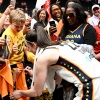
Terri Carmichael Jackson, the executive director of the player’s union, reiterated in a statement this week that the 2020 collective bargaining agreement granted parents protections that ensured pregnancy wouldn’t mean the end of their career. Those include paying players their full salary while on maternity leave and providing an annual child care stipend of $5,000.
“Obviously, these protections did not change the nature of this business,” she added. “Any team can trade any player for any legitimate reason or no reason at all. But that reason can never be on the basis of race, gender, sexual orientation, parental status or pregnancy status.”

Lifestyle
Rivian R2’s Charge Port Moved to Work Better at Tesla Superchargers

Despite its continued lack of profitability since going public, Rivian is doing a lot of good things. For example, the EV maker rescues trucks stuck in a rut and uses shared owner data to let other owners know where the crummy chargers are. The latest add to its no-one-asked-but-we’re-going-to-do-something-nice-anyway list is repositioning vehicle charge ports so they’re more compatible with Tesla Supercharger stations.
Nearly every automaker that sells an EV has announced it will be adopting the Tesla-developed North American Charging System (NACS) charger connecter by 2025. It’s quite a flip from the currently standard Combined Charging System (CCS), which is also the dominant global connector that Tesla itself uses for its cars overseas. But outside of the Supercharger network, the U.S. EV charging infrastructure just plain sucks.
To fend off increasing customer dissatisfaction and slowing sales growth, automakers probably feel a quick fix is adapting to the existing vast, fast, and surprisingly reliable NACS-based Supercharger network rather than waiting for a snail’s pace federally-backed infrastructure to catch up. The problem is there is no standard on where vehicle charge ports should be. There never has been.
Tesla, for its part, has all of its charge ports in the left rear of the vehicle. Like other automakers making the NACS switch, Rivian offers an adapter for its soon-to-be-retired CCS-pronged plug. In 2025, R1 models will have direct NACS compatibility, followed by the R2 in 2026. That’s not the only change coming. Rivian has also moved the charging ports.
Green Car Reports says that during a recent showing of the upcoming R2 and R3X models at the Rivian Space in Pasadena, California, the plug-in location was now the left rear. When the vehicles first debuted, those ports were located on the right rear. Official Rivian images specifically highlight this, all of which still appear on its website. Rivian has previously said that the right rear is ideal for curbside charging as well as plugging into its own charging network.
Although a nice gesture, the update isn’t without detractors. For one thing, the new port position doesn’t help owners who trailer, tow, or use equipment racks. And it’s a valid complaint considering the R1T and R1S have their charge ports in the left front of the vehicle. Public stations with pull-through chargers exist but are scarce. Keep in mind, too, that not only are tow-friendly vehicles like trucks and SUVs going electric, but so are RVs.

According to Gridserve, a majority of EVs have charge ports located in the rear. The chicken-dinner winner is the right side, which claims 37% of the EVs, while the left accounts for 28%. Although these figures are based on U.K. EV sales, they do show a lack of consensus among EV automakers. Sometimes, even internally, there’s no agreement. Kia EVs, for example, have charge ports located in the right rear, left front, and middle front. But this madness could be methodical and based on everything from where the vehicle electronics are, to the market where it’s sold, to even how the vehicle is used (like, ahem, towing).
I’m not sure we can call this a nascent industry at this point, but, damn, does the EV market still have a lot of growing pains to work through. Plus, the industry needs to focus not just on the 42-mile-daily-average suburbanite commuters but also the business travelers, road trippers, haulers, weekend warriors…you know, everyone if the goal is an EV-only future. Because, honestly, disconnecting a trailer just to connect to a charging station is a bish.
Lifestyle
Carhartts and camo: What Tim Walz's folksy fashion sense says

Minnesota Governor Tim Walz with President Joe Biden in Northfield, Minn., on Nov. 1, 2023.
Andrew Caballero-Reynolds/AFP via Getty Images
hide caption
toggle caption
Andrew Caballero-Reynolds/AFP via Getty Images
Few fashion brands say Blue Collar America more than Carhartt. Headquartered in Dearborn, Mich., the company has been selling heavy-duty overalls, jackets, pants and shirts to working-class Americans for 135 years.
So when vice presidential nominee Tim Walz shows up at public events in Carhartt workwear instead of the standard politician’s suit and tie — topped with a hunter-style camo-print cap — the country takes notice.
“It seems to be how he normally dresses,” said menswear writer Derek Guy. “But you just don’t normally see a politician dress so casually.’”
“In Walz, Harris Sees a Battleground Strategy Dressed in Carhartt,” ran a headline in The New York Times earlier this week, over a story exploring the tricky balance the Democratic nominees must strike between appealing to wavering or undecided voters and seeming to be their authentic selves.
Some see Walz’s down-home wardrobe choices as an honest reflection of his Midwestern values. He’s a former high school football coach who served 24 years in the National Guard.

Minnesota Governor Tim Walz prepares to depart for a campaign rally in Philadelphia on Aug. 6, 2024.
Stephen Maturen/Getty Images
hide caption
toggle caption
Stephen Maturen/Getty Images
“Lefties have been crushing lately on MN Gov. Tim Walz, who can voice progressive ideas while (authentically) wearing Carhartt,” wrote J. Patrick Coolican in an opinion piece in the Ohio Capital Journal. “@Tim_Walz is just very Minnesotan!!! And hard working!” wrote MamaG on X.com in reference to Walz’s predilection for the brand.
Others are questioning Walz’s style motives.
“Pandering,” wrote @WFHMommaof3Boyson X.com; User Kwix posted: “Dems have tried much stupider ways to connect with Midwest middle class white voters.”
A much broader appeal
Yet it’s been years since Carhartt has appealed solely to plumbers, longshoremen and construction workers.
“Carhartt has been popular with the street wear scene at least since the 1990s,” said Guy. “And in the last 10 or 12 years, it’s become especially popular as streetwear has become more mainstream.”
Today, Carhartt items fly of the racks at trendy, urban vintage stores and regularly show up in celebrities’ wardrobes. Actors Austin Butler and Chris Pine and pop stars Kanye West and Rihanna have been spotted wearing the brand. There’s even a streetwear spinoff, Carhartt Work In Progress (Carhartt WIP).
“Its range of influence is pretty staggering,” said fashion writer Peter Zottolo in an email. “To older generations, Carhartt means you’re practical, ready to sweat in the dirt, and not afraid to mess up your clothes, because that’s what these clothes were made for. Younger generations get this too, but they also attach an entirely different meaning to it, a sort of IYKYK [If You Know You Know] cachet that whispers cool authority, especially when it’s worn in.”
“It is still very much a workwear brand and our customers who buy Carhartt still are absolutely plumbers, electricians, landscapers, contractors, carpenters, et cetera,” said Chris Litchfield, owner of ACME Workwear, a family-run store in San Francisco that’s been in business for more than 50 years. “But there’s no doubt that there’s been a younger influence as well. We’ve seen a lot of kids coming in recently who are buying it for back-to-school. They’re buying hoodies, they’re buying pants.”
The camo cap
Like other brands such as L.L. Bean and Levi’s that were once considered working class, Carhartt is part of a broader trend toward casual style that started in the last century.
“In the early 20th century, men took their dress direction from elites such as the Duke of Windsor,” said Guy. “By the Post War period, fashion influence was starting to come from laborers, musicians, artists, working class people. And the suit started to lose its dominance in the menswear market.”
Politicians’ style is in keeping with this trend.
Guy noted that politicians have been trying to “dress down” to seem more relatable since the 1970s, if not earlier. “When Jimmy Carter was campaigning, he would sometimes take off his suit jacket. And that was a tradition that Bill Clinton and Obama continued,” Guy said. “In more recent times, Gov. Ron DeSantis was campaigning for the Republican nomination last year while wearing a fishing shirt.”
Other politicians besides Walz have sported Carhartt: John Fetterman, Sarah Palin, Rick Perry, and Barack Obama have all been known to wear items from the brand. (Also, Walz sometimes does wear a suit.)
Guy said Walz likely isn’t paying close attention to the youth appeal of his clothes, adding that the politician’s broader fashion choices, which include L.L. Bean barn coats and Red Wing work boots, are all trending right now. “He just strikes me as the kind of guy that probably buys them from the catalogs, kind of like mainline stores,” Guy said. “I doubt he’s going into fashion boutiques.”
Yet at least one item in Walz’s closet does seem to be engineered to appeal to voters — the camo cap. “That hat demonstrates some thinking on the part of the Harris campaign,” Guy said, noting the political savvy of a version of the cap bearing the slogan “Harris Walz” in eye-catching tangerine lettering showing up for sale online just hours after the campaign released a video in which Walz wore it.
“Clearly they timed the release so that people online would have something to talk about the entire day,” Guy said.
Trump’s campaign is also selling a camo hat with orange lettering that says “Make America Great Again” on the front and Trump on the back, plus an American flag on one side and 45-47 on the other, because Trump hopes to be not only the country’s 45th president but the 47th as well.
Camo hats are understood to be aimed at red-state voters, many of whom back fewer restrictions on gun ownership. Camo merchandise has not traditionally been targeted toward blue state voters.
But the Harris-Walz hat picked up steam on social media when the pop star Chappell Roan noticed a likeness between her own “Midwest Princess” hat and the candidates’ one. “Is this real” she wrote on X.com.
According to Teen Vogue, the Harris-Walz hat sold out in 30 minutes. It won’t be available again until Oct. 14.
Jennifer Vanasco edited this story.
Lifestyle
Aaron Rodgers' Parents Blame Olivia Munn For Schism Between QB, Family
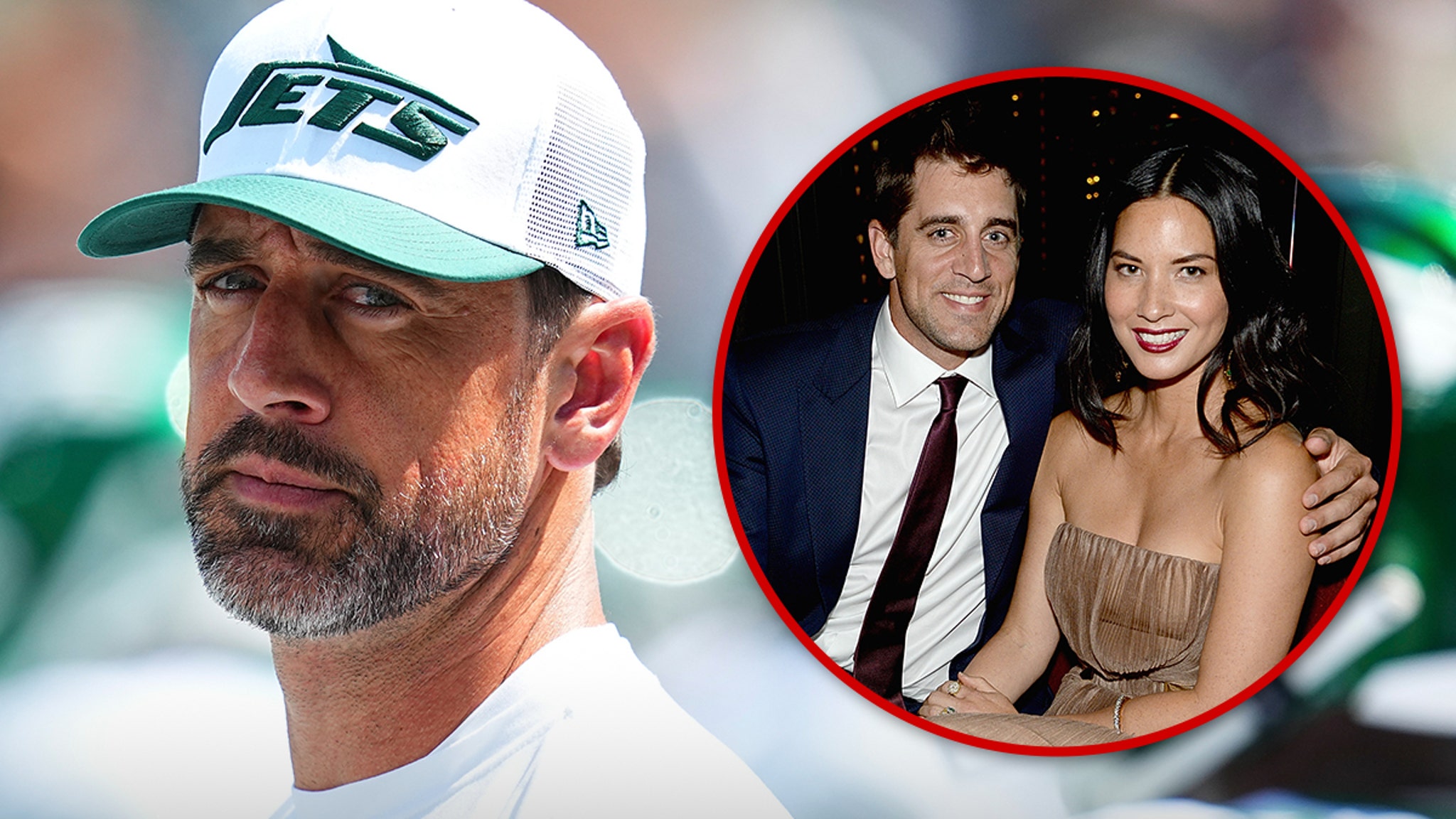
Aaron Rodgers‘ parents say Olivia Munn was the reason for the initial schism between the quarterback and his family … claiming she caused the divide after the then-Packers star had a bad game back in 2014.
Ed and Darla Rodgers made the allegations in an interview with Ian O’Connor for his upcoming book on Aaron’s life titled, “OUT OF THE DARKNESS: The Mystery of Aaron Rodgers.”

The couple says they visited Aaron in Green Bay just before he took on the Buffalo Bills in an early-December clash … and when they left, things seemed just fine.
However, after Aaron laid an egg in the tilt … Munn allegedly called Ed and Darla and told them they were now no longer wanted at Rodgers’ next game, a road matchup with the Buccaneers in Tampa Bay.
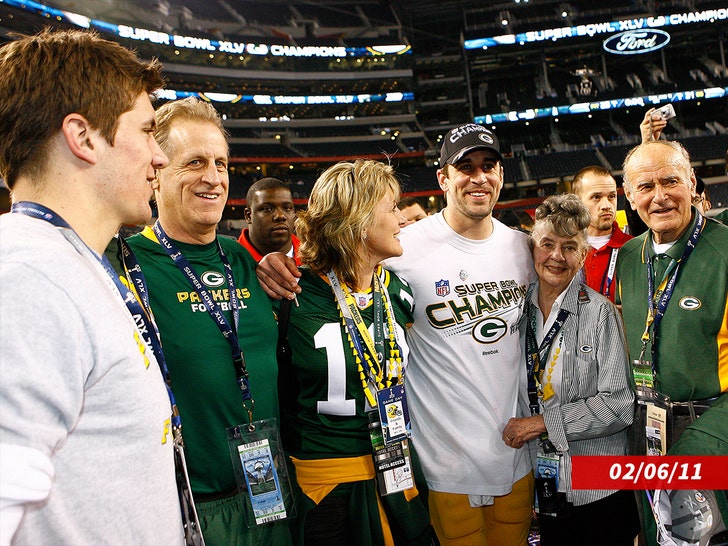
Ed told O’Connor he pushed back on that … saying he informed Munn, “You haven’t been on the scene very long. You’re just his girlfriend. We’re his parents.” He and Darla then proceeded to make the trip to Tampa, although they did not see their son.
Later, they say Aaron told them in an email, “Don’t attack the woman I love” — and from then on, they claim their relationship was fractured.
Rodgers’ parents say it would be nine years before they had “another full conversation” with the NFLer.
Rodgers’ folks also claim that Munn made up lies about the family’s issues in the ensuing years … particularly when she would tell media outlets the fam had problems prior to her arrival.
“She said the family was dysfunctional before she met Aaron, which is bull,” Ed told O’Connor. “We were going to all of his games; we were staying at his house. We had a great relationship. Nothing bad was going on.”
For Rodgers’ part, he didn’t seem to want to expound too much on it all … although he told O’Connor “his family issues are deep-rooted” — and not Munn’s fault.
As for Munn, O’Connor says she declined to comment.
-
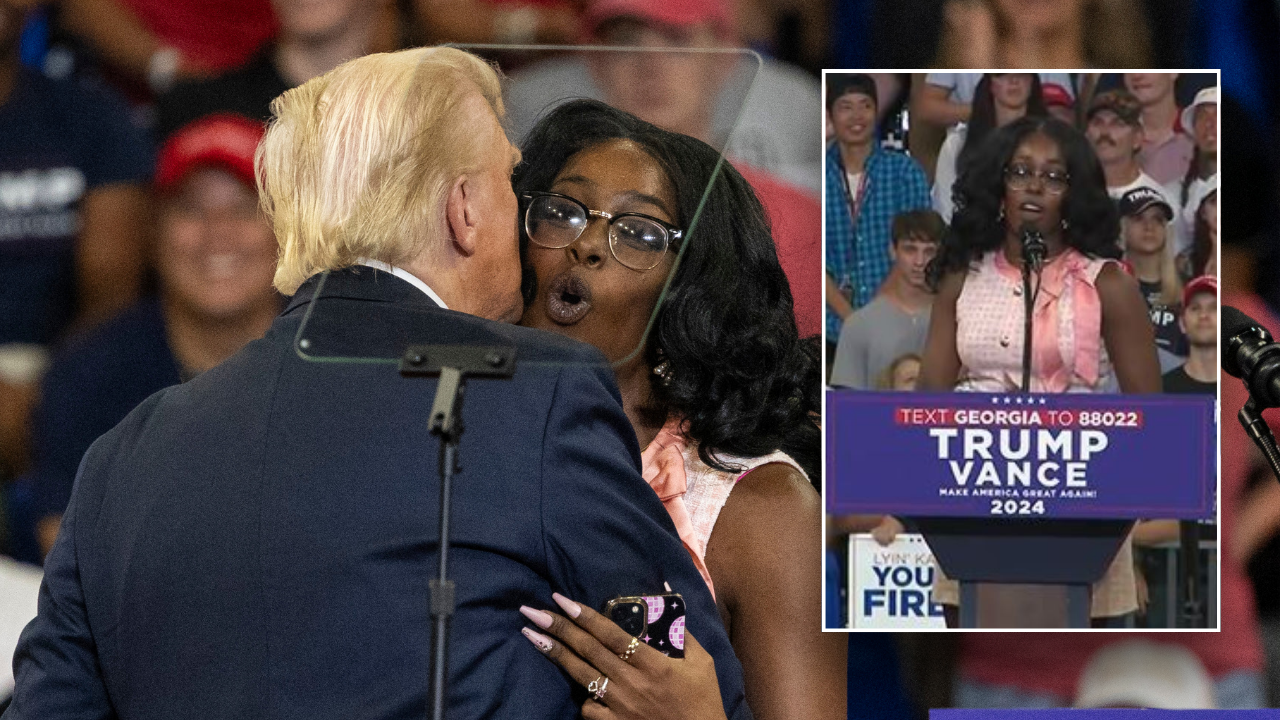
 Politics1 week ago
Politics1 week agoGeorgia activist steals the show after being introduced by Trump at Atlanta rally: 'Incredible'
-
News7 days ago
The ‘Blue Walz’: How a low-key Midwestern governor shot to the top to be Harris’ VP pick | CNN Politics
-
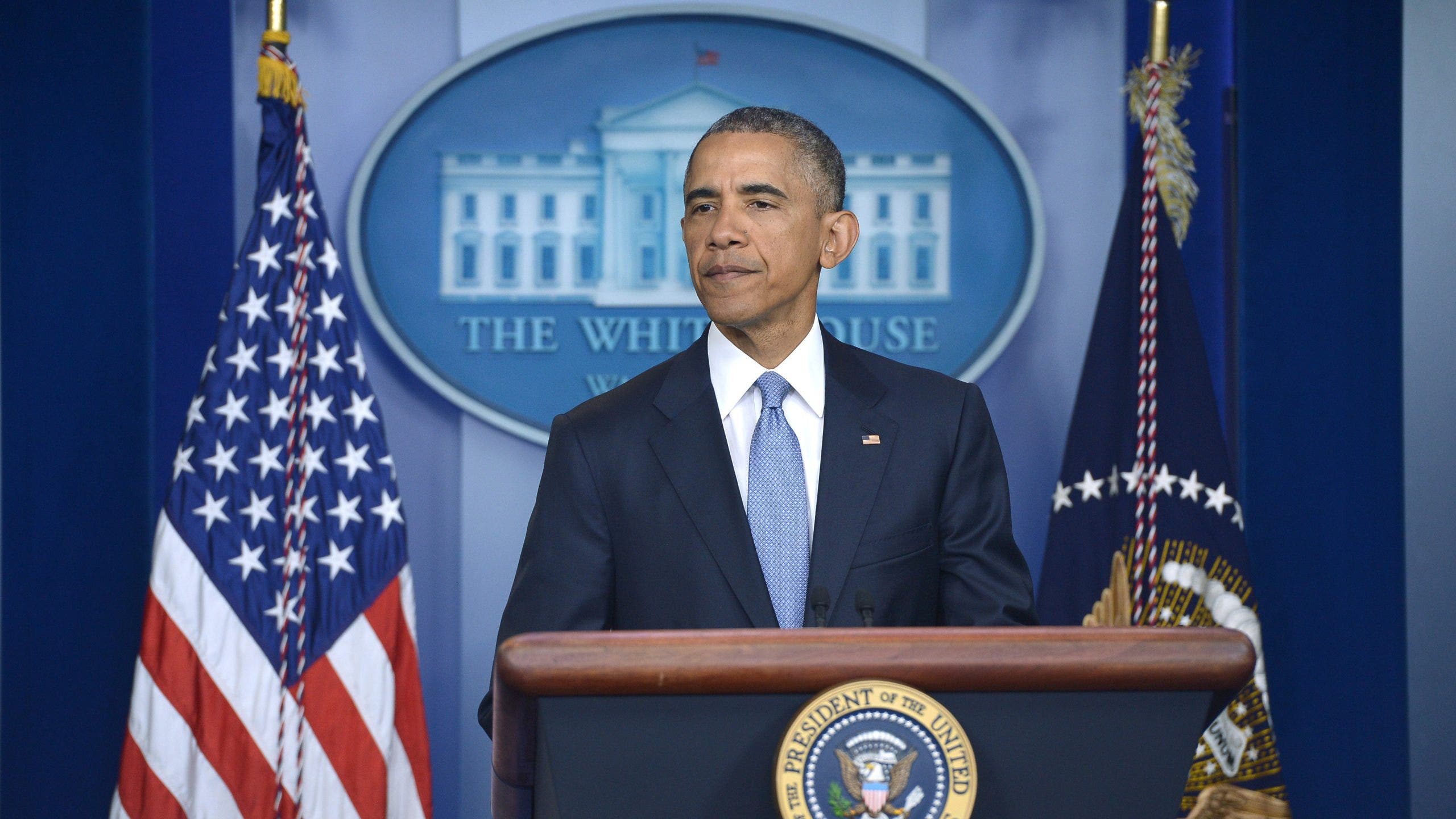
 Politics1 week ago
Politics1 week agoBarack Obama's political career kicked off in the Illinois State Senate, evolved into a two-term presidency
-

 World1 week ago
World1 week agoHamas begins consultations to choose Ismail Haniyeh’s successor
-

 Politics1 week ago
Politics1 week agoMark Kelly posts cryptic message amid Kamala Harris veepstakes speculation
-

 World1 week ago
World1 week agoVenezuela launches probe against opposition leaders Gonzalez, Machado
-
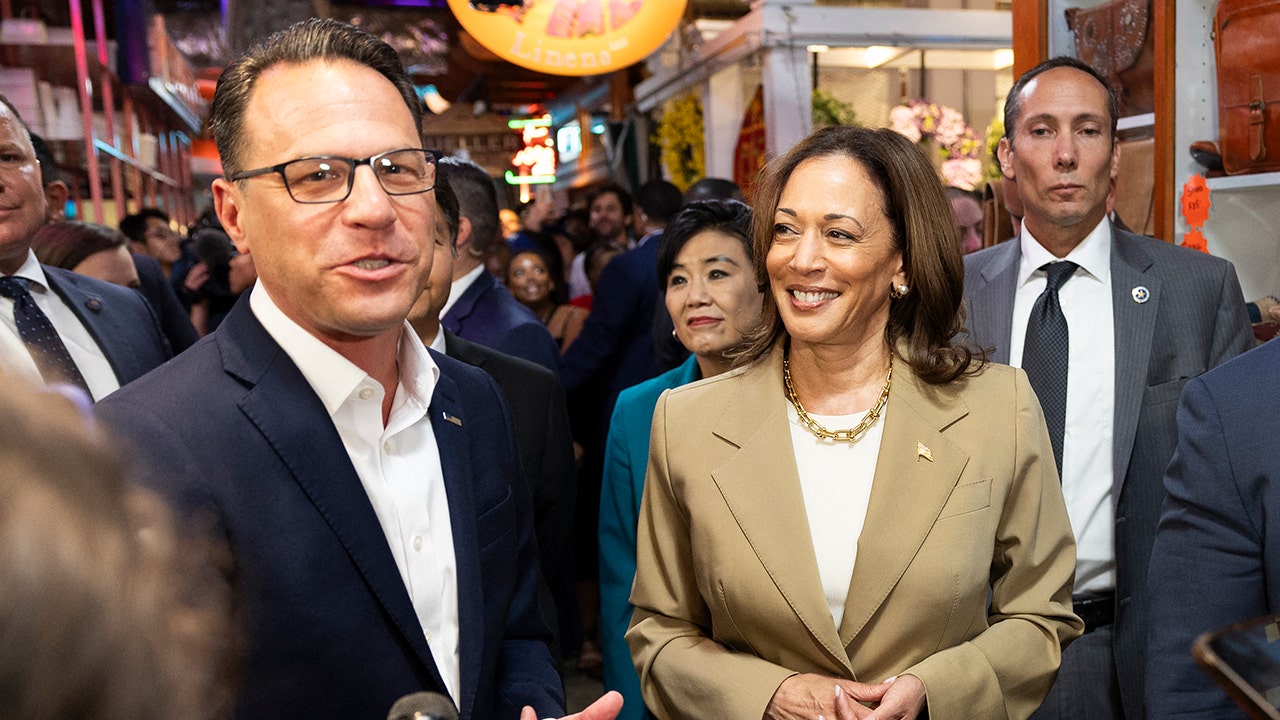
 Politics1 week ago
Politics1 week agoHarris VP search comes down to the wire, with Dems divided over Shapiro, Walz, Kelly
-
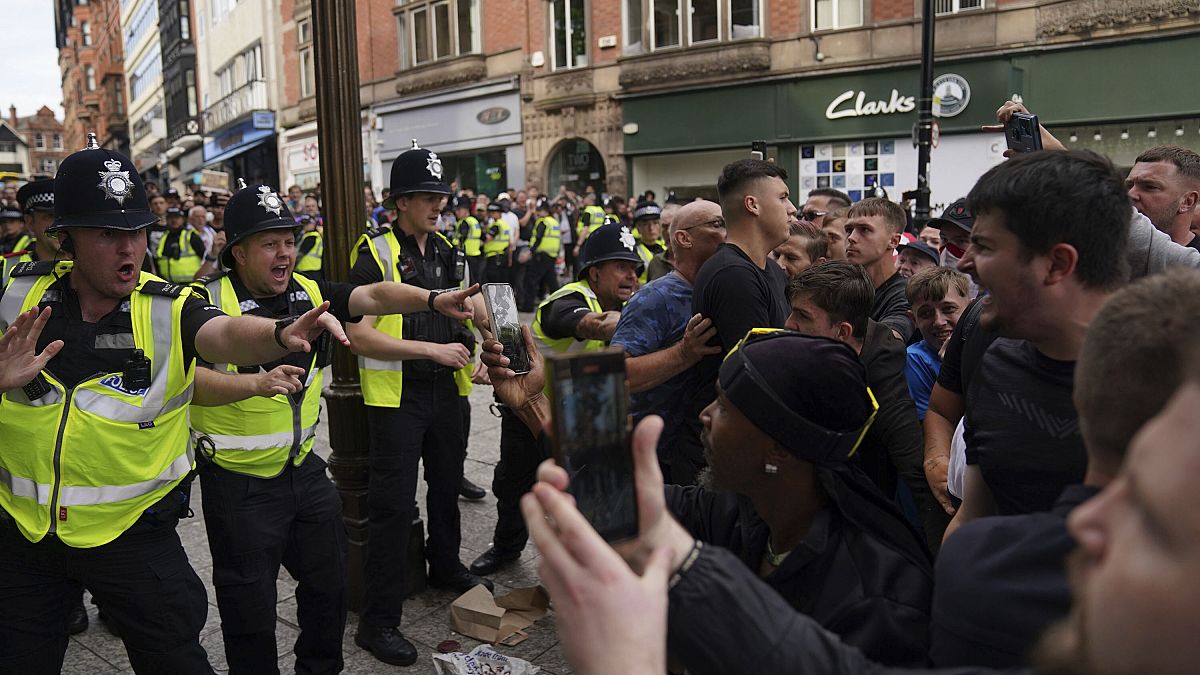
 World1 week ago
World1 week agoSeveral police officers injured in protests across the UK

